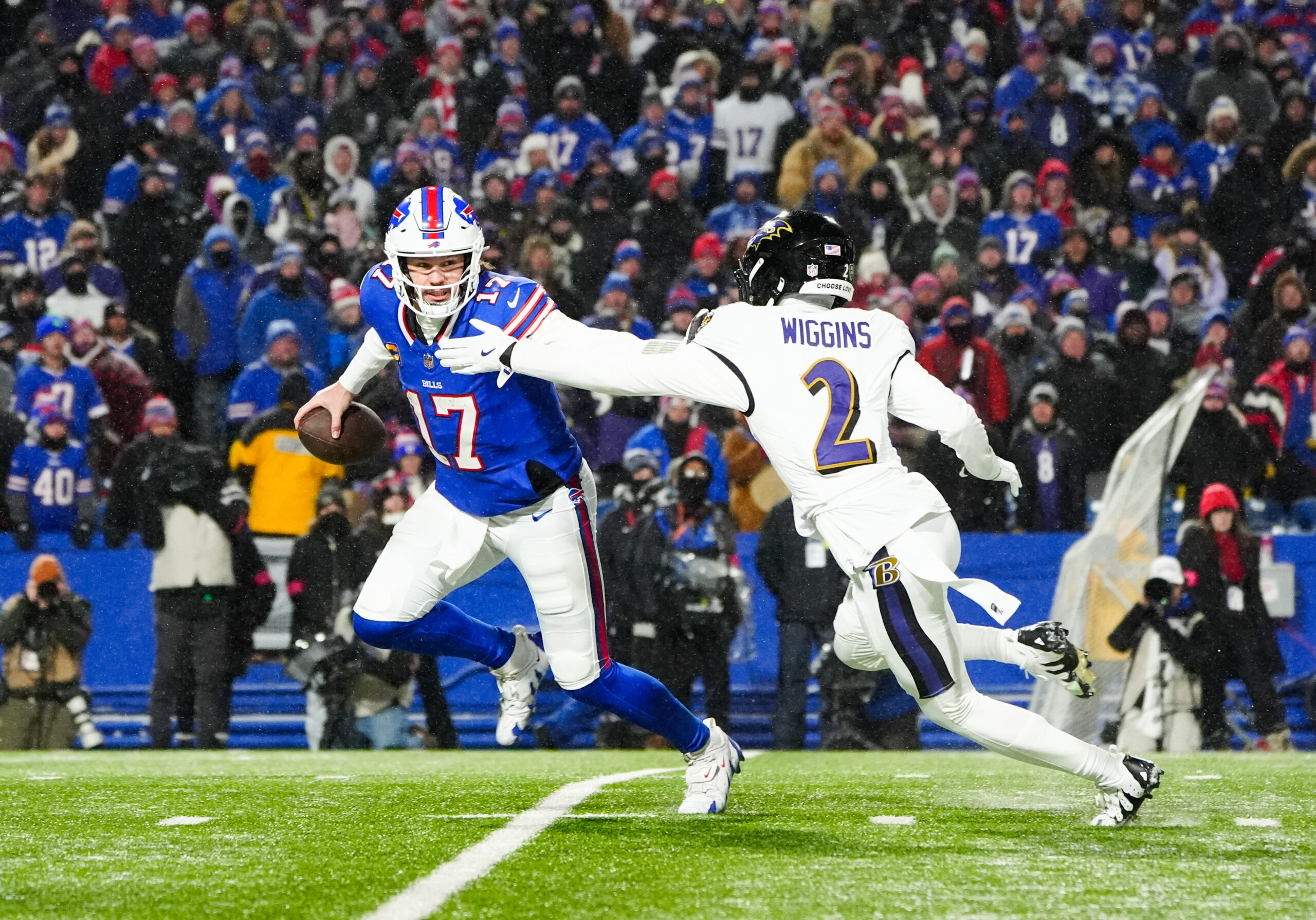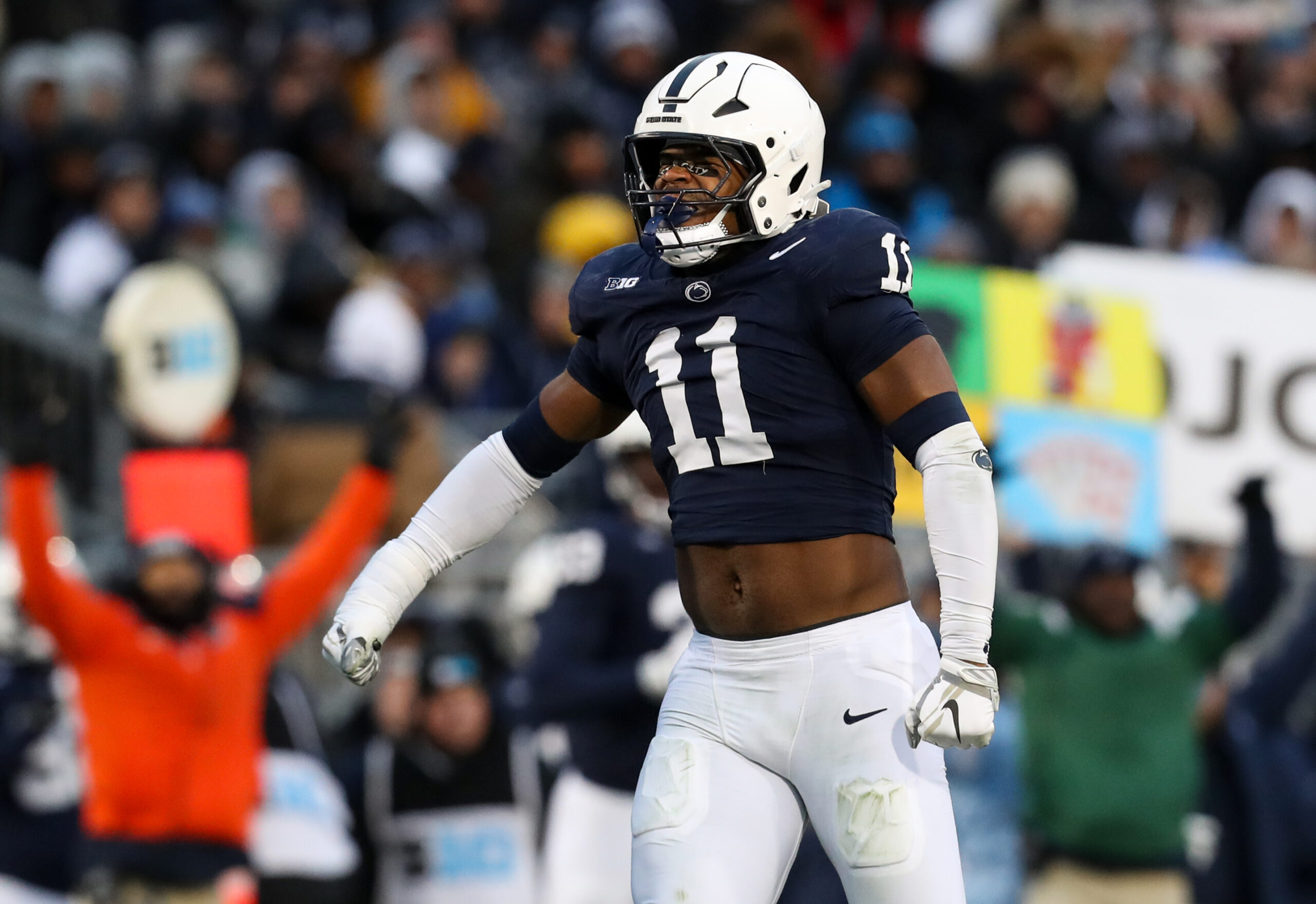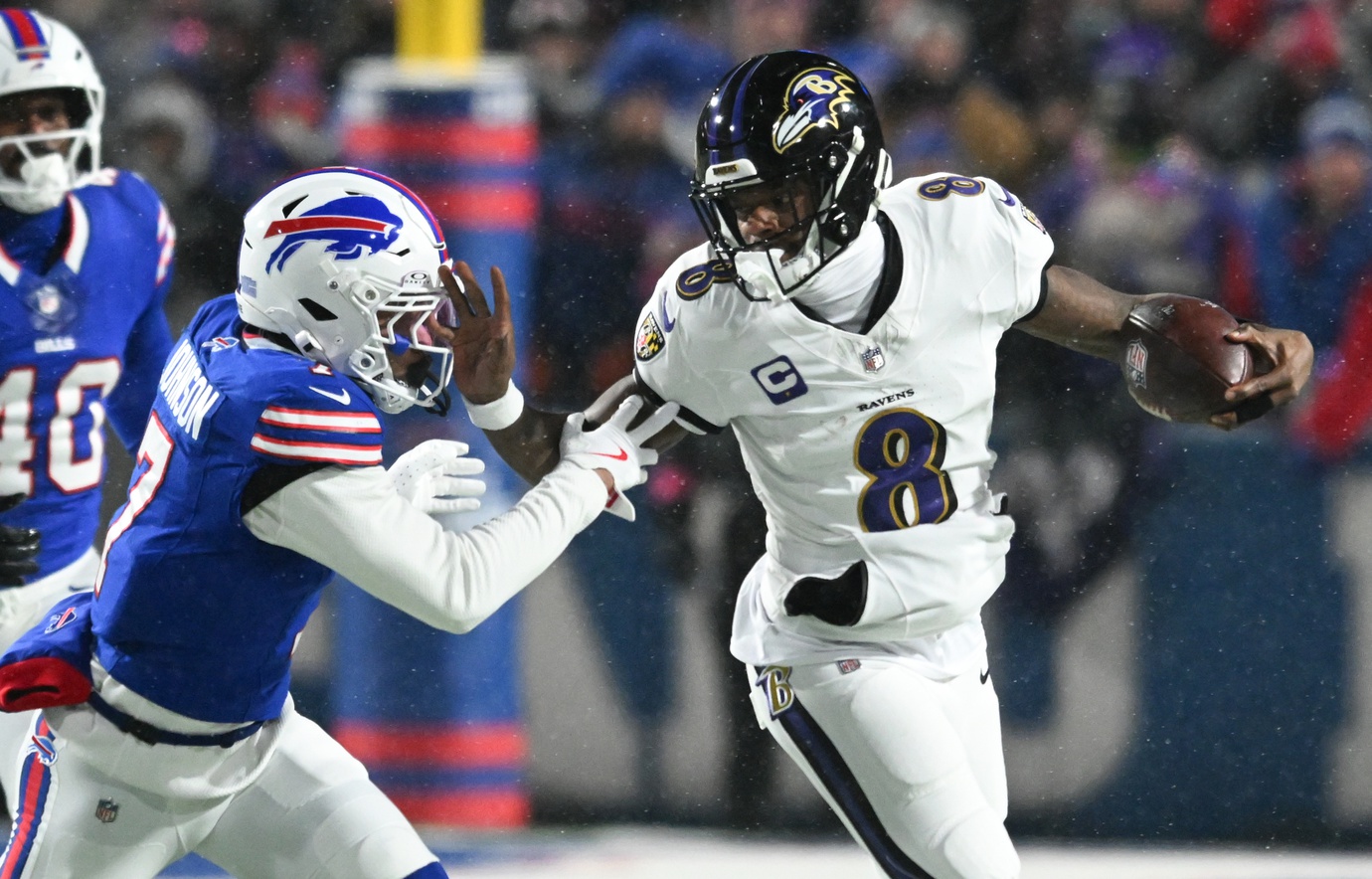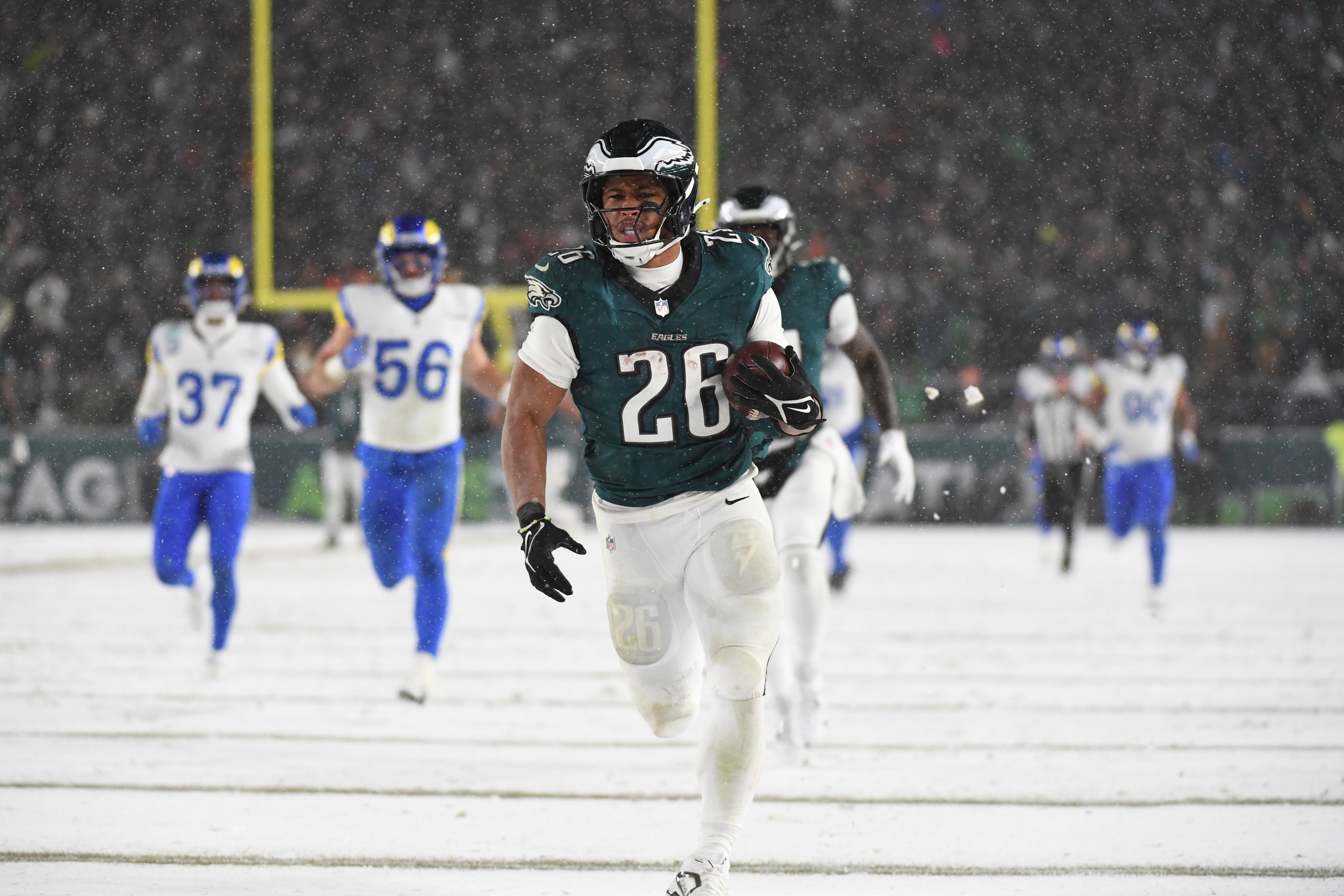NFL Analysis
12/20/24
13 min read
Four Ups, Four Downs NFL Week 16: Vikings Offense, Richardson's Struggles, Packers Going Empty
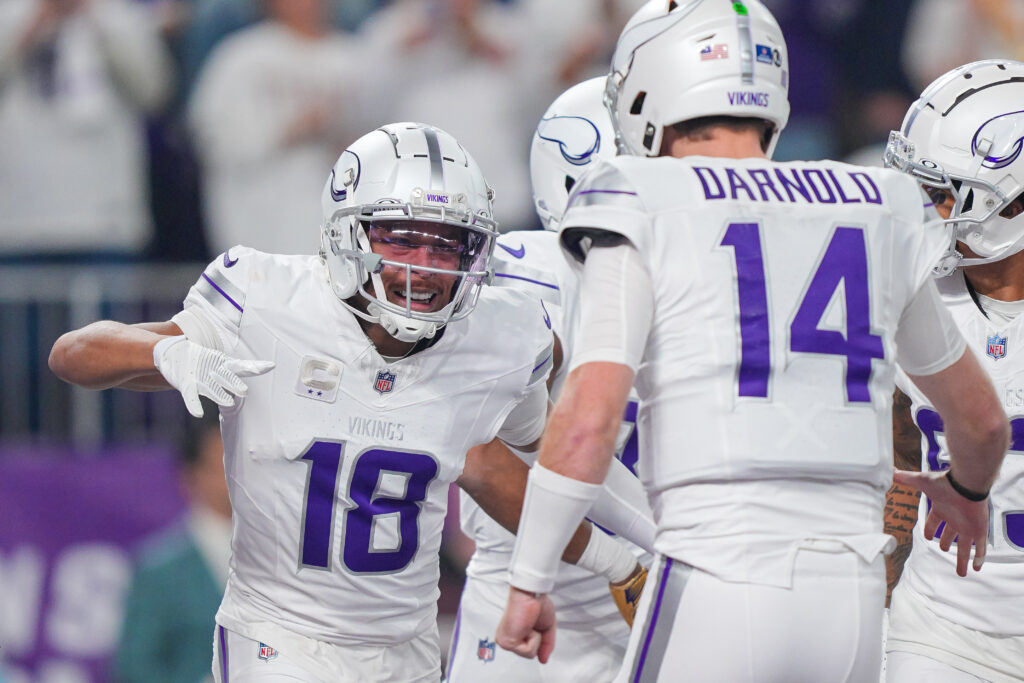
Each week in Four Ups, Four Downs, we look at four good and four bad things around the league. This week, we’ll look at some changing offensive formations, standout defensive players, and struggling quarterbacks.
Up: Different Ways To Get To The Dig
Sam Darnold wants to sling it. The base of the Minnesota offense centers around that point. The Vikings have an aggressive quarterback, and they lean into that by creating so many open throws down the field. Minnesota leads the league in pass plays of 20 or more yards (55) through Week 15.
The Vikings have so many different looks and changeups to create those big plays. When teams play single-high, it’s easy to throw a go down the sideline to Justin Jefferson or Jordan Addison. When teams play two high? Hit in-breakers in front of the deep safeties.
That’s the bit that stands out for this offense. There have been so many different ways to open up that dig in the middle of the field. Because the Vikings can be so vertical and both top receivers can be deep threats, there is always a vertical element that the defense needs to prepare for.
Addison can clear out for Jefferson. Jefferson can clear out for Addison. Any third receiver can clear out for Addison or Jefferson while the other is isolated to the opposite side of the field. The motions, shifts, and route combinations always give a different look but still present Darnold with an open window in the middle of the field.
— Dan's Clips (@dansfilmclips) December 20, 2024
On plays that have gained at least 20 yards, only Jared Goff has a higher rate of them from in-breaking routes (17.6 percent) than Darnold (15.1 percent). Even there is where the Vikings have an advantage because Goff and the Lions can be so reliant on those digs but Darnold has more range in the throws available to him in the offense.
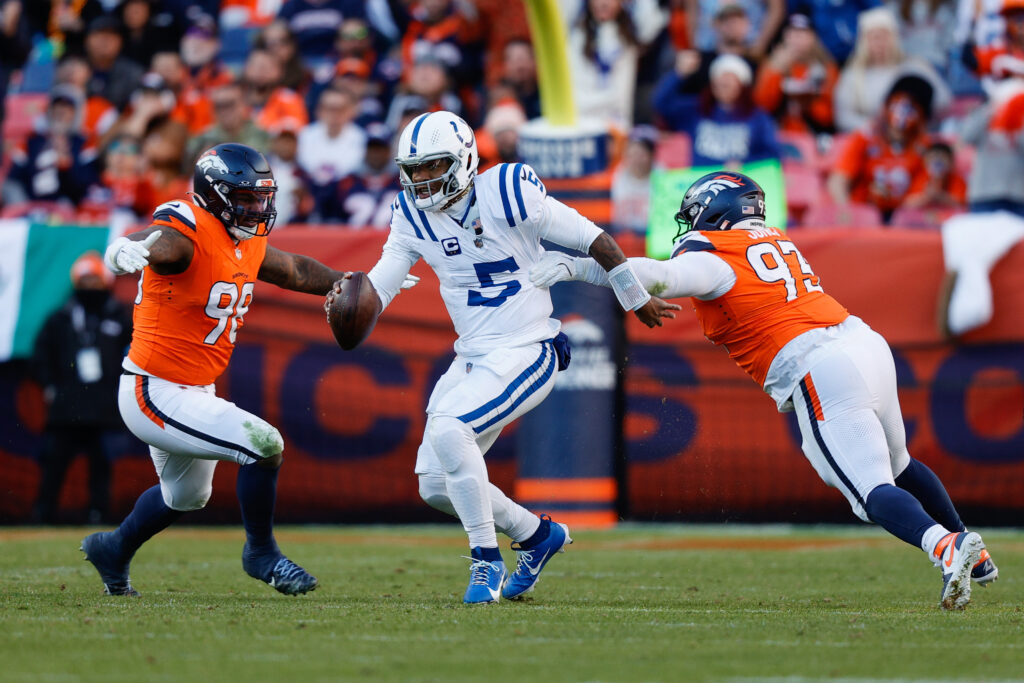
Down: The Same Story With Richardson
Each week in the quarterback rankings, I tend to write something like, “The film looked better than the stats would indicate,” while writing up Anthony Richardson. While that remains true, it’s disheartening that we’re still in that place as we reach the end of the 2024 season.
Richardson is currently 31st among 34 qualified quarterbacks in EPA per play and success rate. There have been points during the season when Richardson’s overall efficiency was boosted by big plays that made up for the lack of completions and down-to-down consistency, but now those explosives haven’t hit at the same rate.
His 13.5 percent explosive pass rate is just 18th. If that’s going to be the feature that lifts other inefficiencies, that can’t just be an average rate.
It’s also concerning that the Colts haven’t completely figured out the best way to structure the offense in order to get the most out of the quarterback. The designed run game is spotty and the passing game still revolves around deep throws down the sidelines to a group of receivers not completely built for that.
The weaknesses in his game also haven’t been fixed. Richardson has been charted as inaccurate on 12.1 percent of his throws between 1-10 air yards. That’s the highest rate in the league. The Colts only have an explosive pass on one percent of his attempts to that level of the field, better than just Deshaun Watson (zero) this season.
Those short throws were an issue in college, partly because he didn’t throw them all that often. That’s still the case in the NFL, with a league-low 39.5 percent of his passes going to that depth. It’s nearly impossible to sustain a professional passing offense if that short area just isn’t available to be used, and that’s where the Colts are now.
There’s still a good quarterback in there somewhere but neither the player of the team has figured out the right steps to get that quarterback out for a sustained period of time.
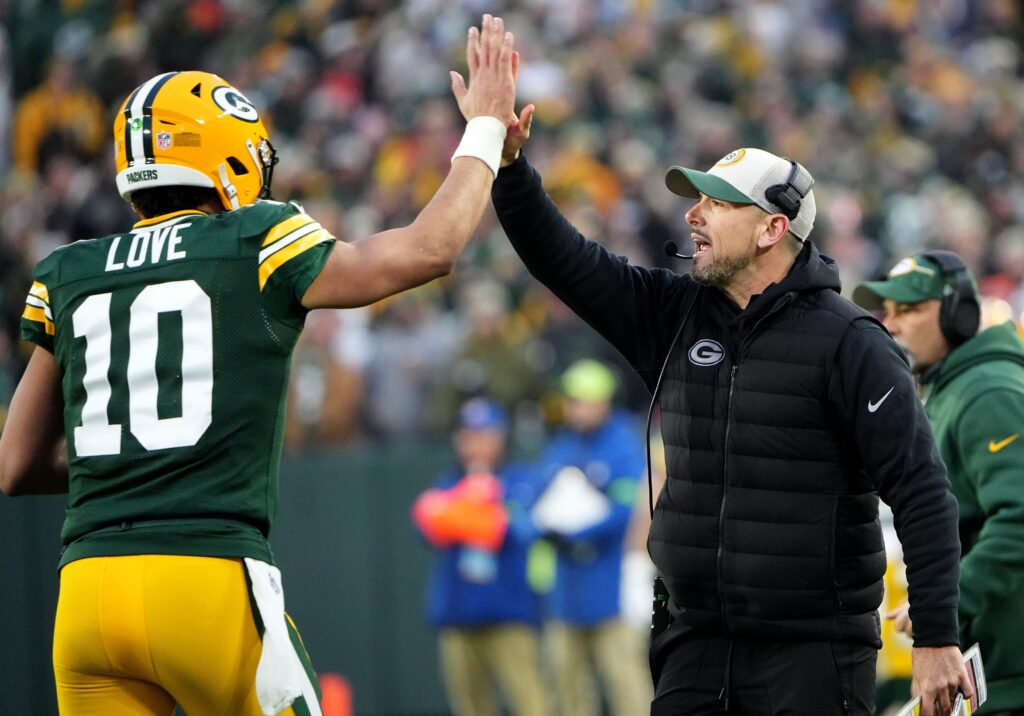
Up: Packers Going Empty
The Green Bay offense is at its best when the run game is going, and the Packers can set up some shot plays with under-center play-action. But one area where the offense has worked well this season is when it’s gone empty in the passing game.
There’s an underrated benefit to the receiving corps the Packers have. We’ve talked about that in an overall sense for most of the season that without a true No. 1 threat, it’s difficult for a defense to key on one thing to stop. The ball can go anywhere without a dropoff in quality. That can be exponentially true when the Packers spread defenses out in empty.
The Packers have multiple ways to exploit this. Here’s a play from the red zone against the Seahawks in Week 14. Green Bay had a bunch to the right side and two receivers to the left. Before the snap, Jayden Reed motioned from left to right to create a 4x1 formation. Reed’s motion forced the linebacker to shift toward the middle of the field, which created a bigger throwing lane for Romeo Doubs on the left side. Doubs then powered his way into the end zone for a touchdown.
— Dan's Clips (@dansfilmclips) December 20, 2024
Because Jordan Love is willing to try any throw, the Packers have also stressed defenses vertically from empty, compounding the horizontal stretch of having everyone spread out. Love has the second-highest average depth of target from empty (10.2).
The Packers love creating chaos on the quad side of a 4x1 to draw attention and leave the isolated receiver with a 1-on-1. Against Detroit, that isolated receiver was Christian Watson, who gained 59 yards.
— Dan's Clips (@dansfilmclips) December 20, 2024
Love is just 21st in the rate of using empty (11.1 percent), but he’s second in EPA per play (0.45).
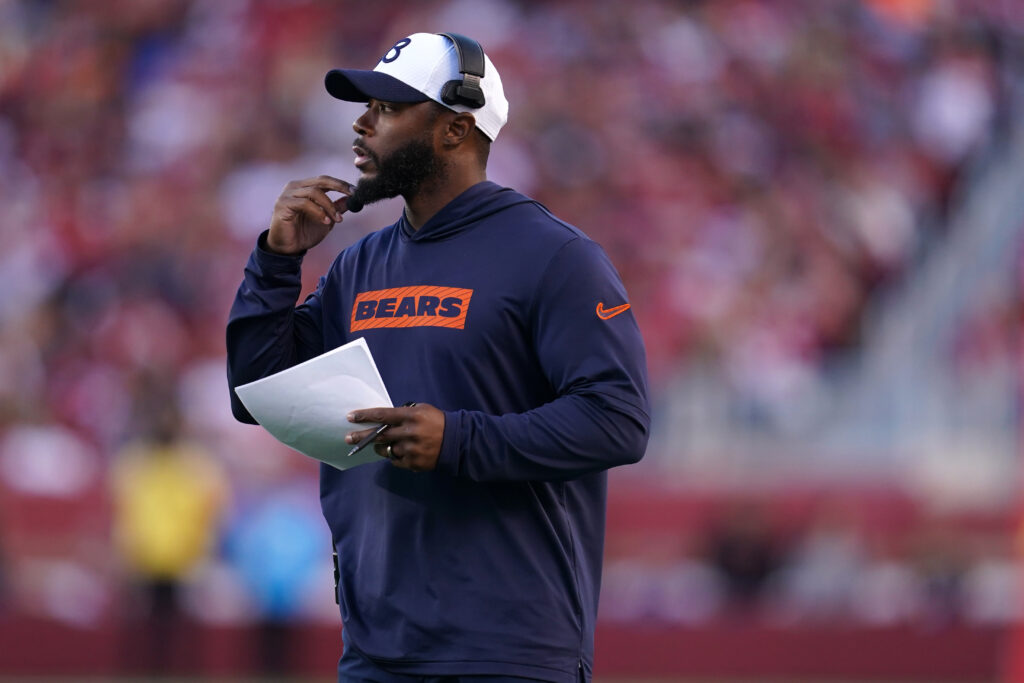
Down: Bears Can’t Get Started
Four teams have not scored a touchdown on an opening drive this season. That is not necessarily an indication of offensive quality. One of those teams is the Philadelphia Eagles, who could be the top seed in the NFC by the end of the regular season. However, there’s only one team that hasn’t even reached the red zone on an opening drive this season, and that team is the Chicago Bears.
A lot of things have gone wrong for the Bears this season but for the offense to not even reach the 20-yard line on an opening drive seems unfathomable. The Bears have been the 14th team since 2000, and they have not had an opening drive reach the red zone through Week 15. The good news is most of those teams did it at least once before the season ended. Just five of those teams finished with a 0-for — the 2002 Panthers, the 2021 Raiders, the 2013 Rams, the 2018 Commanders, and the 2020 Texans.
The Bears are also in a category of their own by how often their first drives have gone three-and-out. This season, Chicago has gone three-and-out on 64.3 percent of opening drives.
You shouldn’t need to be told that’s the highest rate in the league. Since 2000, 17 teams have gone three-and-out on opening drives at least 60 percent of the time through Week 15. The 2022 Panthers are the only offense to join the 2024 Bears in appearing on both the three-and-out and non-red zone lists.
It’s hard to believe the Bears have struggled so much this season that figuring out the best plays to get the offense going has been nearly impossible. That’s a failure all around, and the next coaching staff will need to improve that to continue developing Caleb Williams.
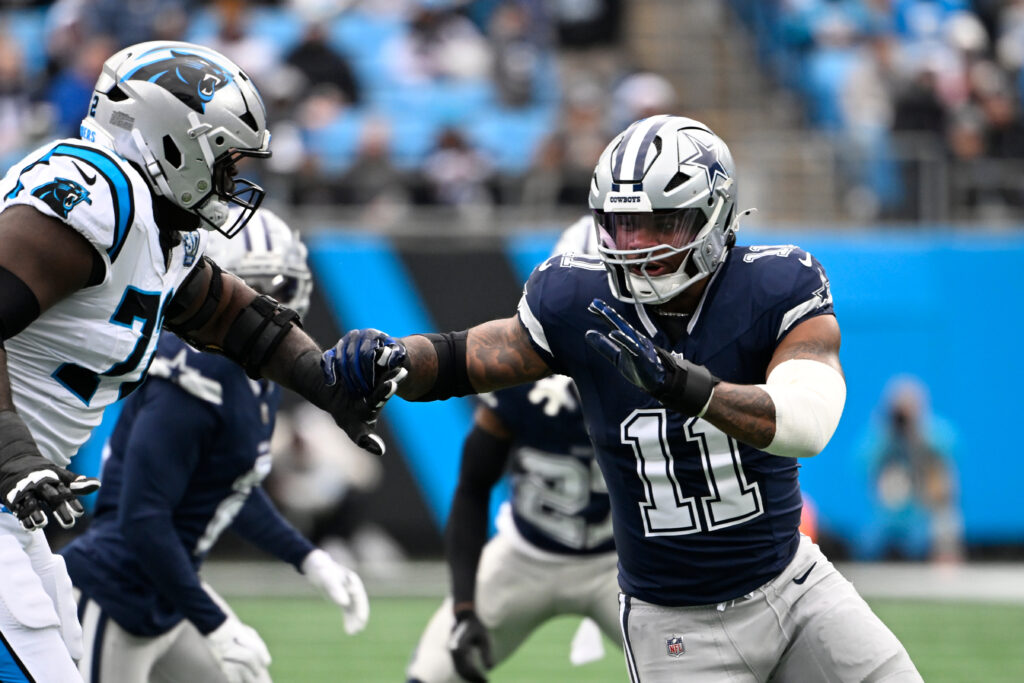
Up: Micah Parsons still going
Micah Parsons has only played in 10 games this season. When he returned from a high ankle sprain in Week 10, the Cowboys were already 3-5 and Dak Prescott was out for the season. Parsons, though, has not acted like there was nothing to play for. Being visually upset at the end of the game against the Bengals that the Cowboys fumbled away highlighted how much he’s put into his return to the field.
Since Week 10, Parsons has led the league with 39 pressures. Only Chop Robinson (35) and teammate Osa Odighizuwa (30) have at least 30. Parsons has 7.5 sacks, which also leads the league over the past six weeks.
Parsons still looks as explosive as ever, and when he turns it on, good luck to any opposing offensive lineman.
— Dan's Clips (@dansfilmclips) December 20, 2024
The Parsons aspect here is fascinating because he’s in the fourth year of his rookie contract with a fifth-year option for 2025. In the past, the Cowboys have waited until the end of deals to get extensions done (see: Dak Prescott and CeeDee Lamb this offseason).
With a down season, the Cowboys have started to float the idea that maybe paying players at the top of the market is a mistake instead of waiting until there is no salary cap relief by waiting as long as possible to get the contracts done, leaving no time or space to add talent to the roster.
Dallas has soft-launched the idea of a Parsons trade this offseason. Parsons will want — and deserves — to be paid as one of the best defensive players in the league, which would cost upwards of $30 million per year.
We can’t say it would be hard to imagine this defense without Parsons because we’ve seen it this season. The Cowboys rank 16th in EPA per play with Parsons on the field and 30th without him. They rank third in EPA per dropback with him and 31st without him. The Cowboys are second in pressure rate with him and 20th without him.
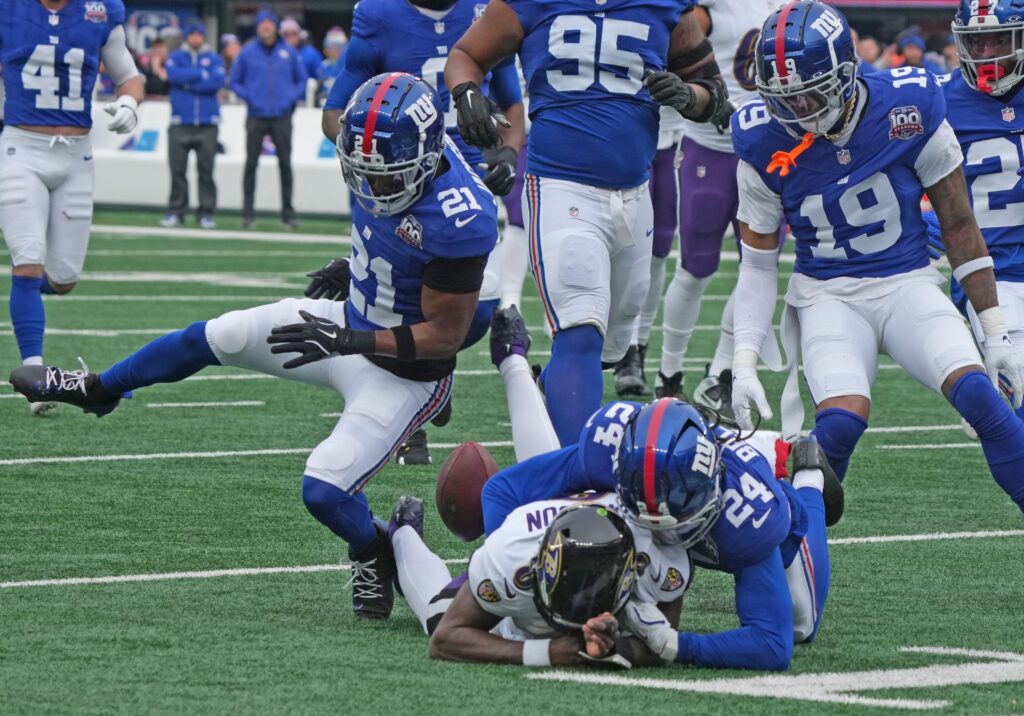
Down: Giants stopping deep passes
“Giants stopping anything” could be the topic here, but we’ll focus on the deep passing. The Giants have a 37.5 percent success rate against deep passes this season.
That’s easily the worst in the league. Here’s a visual of how much worse that is compared to every other team in the NFL this season.
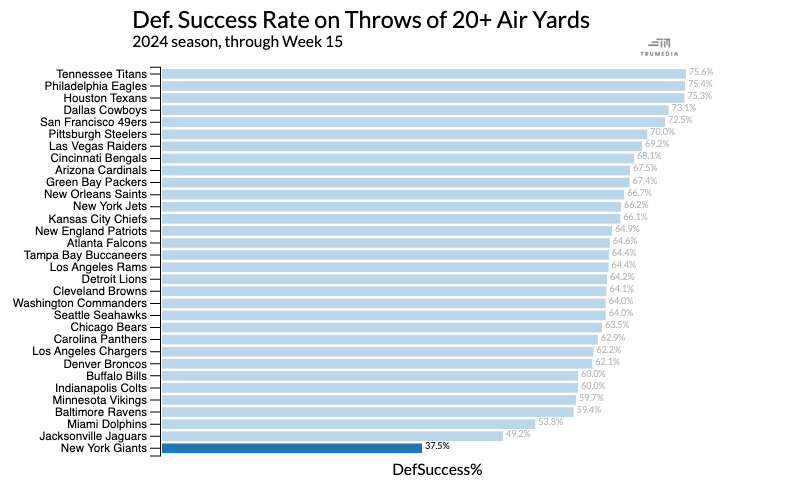
The Giants are allowing 19.1 yards per play on those deep shots—that includes incompletions. The Jaguars are second worst at 17.3, and the Colts are the only other team allowing more than 15 yards per play (15.1).
As the Giants tried to get away from the boom-or-bust nature of the Wink Martindale defense, they’ve found themselves back in it. They have the highest blitz rate on attempts of 20 or more air yards at 45 percent. When opposing offenses see a Giants blitz, they can hang on just enough for a receiver to run past the secondary.
Even without a blitz, the coverage structure and responsibilities can be easily exploited, and there are wide-open spaces to throw passes.
— Dan's Clips (@dansfilmclips) December 20, 2024
The Giants have the fifth-worst EPA per play on deep passes through Week 15 since 2000. They might be worse but because they also struggle elsewhere on defenses, opposing offenses haven’t needed to throw deep as often.
Worst EPA/Play vs Deep Passes Through Week 15 Since 2000 (per TruMedia)

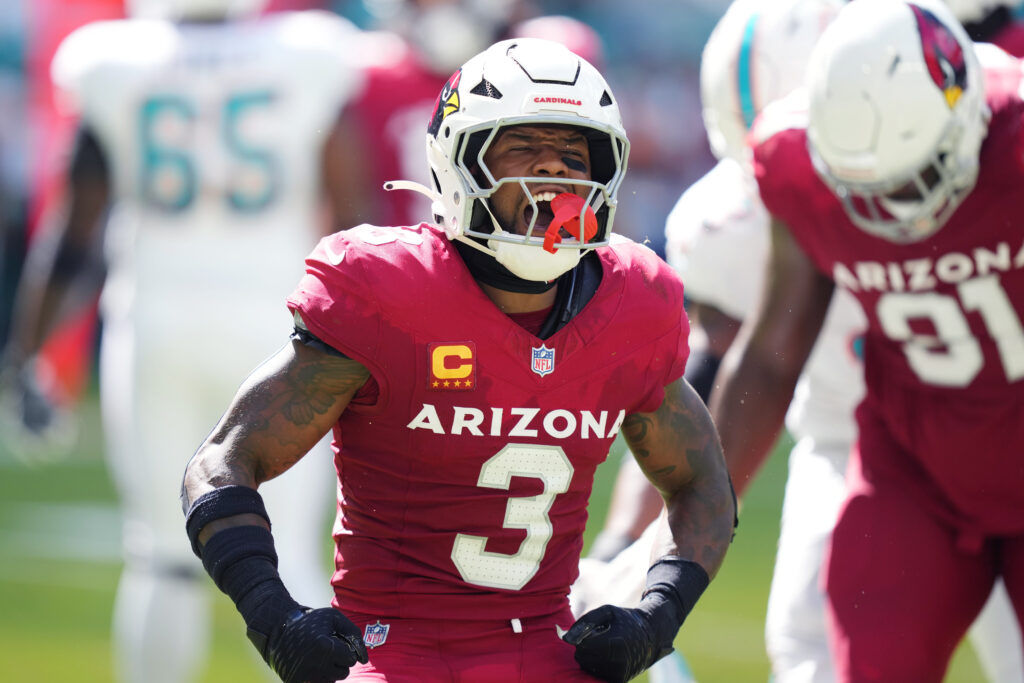
Up: The Budda Baker Extension
Earlier this week, Budda Baker signed a three-year, $54 million contract extension with the Cardinals. In a time when some safety contracts have been depressed in the market, this is a great deal for Arizona safety; it includes $27 million in new guarantees and runs through the 2027 season.
We’ve seen some safeties become do-it-all fixers for defenses this season, and in the cases of Brian Branch and Kyle Hamilton, it’s had some impact on their individual production. But that has not been the case for Baker, who has been everywhere in the Arizona secondary.
Baker plays a key role in Arizona’s three-safety defensive sets. In this defense, Baker now aligns as a deep safety more often, 69.3 percent of the time, but he can go anywhere after the snap. Despite nearly 70 percent of his snaps lined up deep, he has nine tackles for loss.
He’s often the rotating safety who comes down in the run fit and protects the middle of the field. When he’s coming downhill, he can find any hole and make a play.
— Dan's Clips (@dansfilmclips) December 20, 2024
He’s second in the league in tackles, trailing Zaire Franklin by two. He’s made a tackle on 17 percent of his defensive snaps and other other defensive back is remotely close to that figure.
Pittsburgh’s DeShon Elliott is second at 14.3 percent. His 59 tackles that have produced a positive play for the defense are 11 more than the next defensive back.
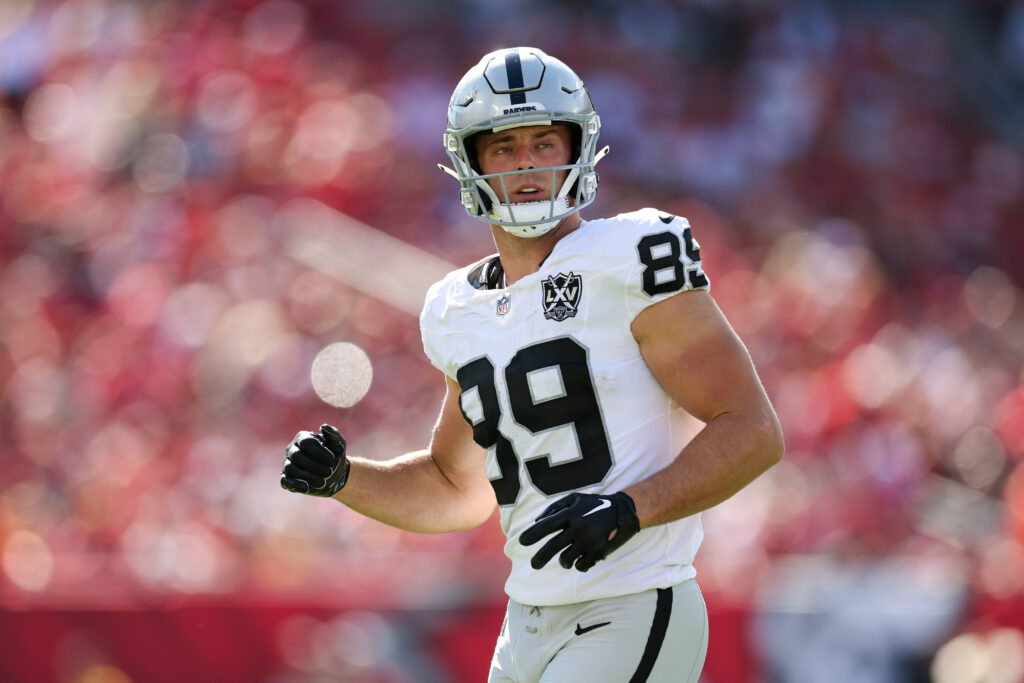
Down: Raiders in the low red zone
Through Week 15, the Las Vegas Raiders have scored a touchdown on 52 percent of their goal-to-go series. That’s the lowest rate in the league. There are 25 teams with a higher touchdown rate once they reach the red zone.
We’ve discussed some of the Raiders’ red zone issues when diving into Brock Bowers a few weeks ago but the entire operation has been poor. Because the Raiders can’t run the ball, they have the third-highest pass rate in goal-to-go situations, more than 66 percent.
But Las Vegas doesn’t use that high pass rate to try to get the ball into the end zone. Just 39.5 percent of the Raiders’ pass attempts with goal-to-go travel into the end zone, which ranks 22nd. So they’re accepting they don’t have a good run game, but throw short of the goal line and hope blocking and yards after the catch can get them in. Sure.
But there might be a reason for this — the Raiders average -0.64 EPA per play with a 26.7 percent success rate on passes thrown into the end zone in these situations, both marks rank 30th.
The Raiders can’t create or manipulate space in or just outside the end zone despite having an other-worldly tight end, who should be one of the league’s best red zone weapons.

